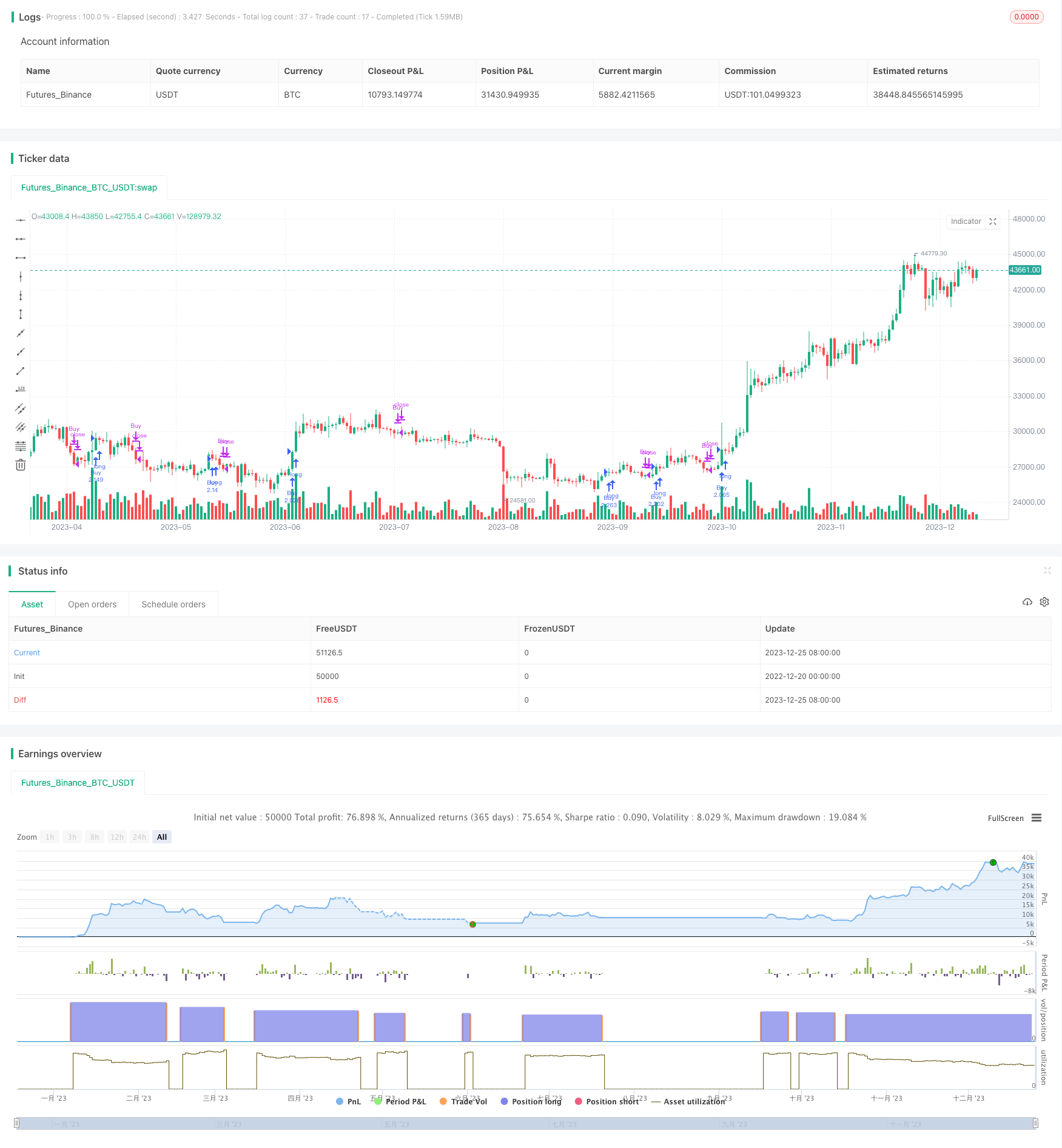
概述
该策略采用EMA快慢线交叉的方式,实现对价格趋势的跟踪。当快线从下方上穿慢线时,做多;当快线从上方下穿慢线时,平仓。该策略主要适用于趋势较明显的品种,能够有效跟踪趋势,获得超额收益。
策略原理
该策略的核心指标为EMA均线。EMA均线的计算公式为:
EMA(t)=C(t)×2/(n+1)+EMA(t-1)×(n-1)/(n+1)
其中,t为当前时刻,C(t)为当前行情收盘价,n为参数N的值。 such that EMA是一种带有加权因子的移动平均线技术指标。EMA赋予了最新价格更高的权重,这样可以更快速地反应最新价格变动。
该策略构建快速EMA均线和慢速EMA均线,以快速线上穿慢速线为买入信号,快速线下穿慢速线为卖出信号。当快速线上穿时,表示价格开始新一轮的上涨;当快速线下穿时,表示价格上涨趋势结束,开始回调下跌。
优势分析
该策略具有如下优势:
- 策略思路清晰,容易理解和实现;
- 利用EMA这个简单实用的技术指标,对价格趋势进行判断,避免错过主要趋势机会;
- 策略参数较少,主要依赖快慢EMA均线,方便调整优化;
- 买入后能够跟踪上涨趋势,及时获利;
- 卖出后能够避开价格回调,减少风险;
- 回测数据充足,可靠性较高。
风险分析
该策略的主要风险有:
- EMA均线发出假信号的概率较大,可能导致亏损;
- 行情震荡时,EMA均线容易互相穿越,产生频繁交易信号;
- 突发事件导致快速断头方向改变,无法及时止损;
- PARAMETERS优化空间有限,实际表现可能弱于回测结果。
为降低上述风险,可采取如下优化措施:
- 结合其他指标进行filtered,避免假信号;
- 调整参数,减少信号频繁;
- 增加止损策略,控制单笔损失;
- 测试不同时间周期参数,寻找最优参数。
优化方向
该策略可从以下几个方面进行优化:
- 多时间周期合成指标。例如配合周线或月线判断大趋势方向;
- 增加filter条件避免假突破。例如成交量,布林带等;
- 动态调整参数。使参数可根据行情实时变化;
- 结合其他指标构建模型。例如网格、回归等算法模型。
总结
该策略总体来说是一种较为简单实用的趋势跟踪策略。它利用EMA均线判断价格趋势,操作逻辑清晰,易于实现。优点是参数调整简单,能够有效跟踪趋势;缺点是容易发出假信号,实际表现可能弱于回测。下一步可从引入filter条件、动态调参、模型构建等方面进行优化,使策略更加稳定可靠。
策略源码
/*backtest
start: 2022-12-20 00:00:00
end: 2023-12-26 00:00:00
period: 1d
basePeriod: 1h
exchanges: [{"eid":"Futures_Binance","currency":"BTC_USDT"}]
*/
//@version=4
strategy("EMA交叉策略by GPT",
format = format.inherit,
overlay = true,
default_qty_type= strategy.percent_of_equity,
default_qty_value = 100,
currency = currency.USD,
initial_capital = 1000000)
// 定義回測交易開始和結束時間的變數
start_time = input(title="開始時間", type=input.time, defval=timestamp("01 Jan 2020 00:00 +0000"))
end_time = input(title="結束時間", type=input.time, defval=timestamp("31 Dec 2050 23:59 +0000"))
// 判斷是否在回測交易時間範圍內
in_range = true
// Define input variables
fast_length = input(title="Fast EMA Length", type=input.integer, defval=5)
slow_length = input(title="Slow EMA Length", type=input.integer, defval=20)
// Define EMAs
fast_ema = ema(close, fast_length)
slow_ema = ema(close, slow_length)
// Define buy and sell signals
buy_signal = crossover(fast_ema, slow_ema)
sell_signal = crossunder(fast_ema, slow_ema)
// Buy signal
if in_range and buy_signal
strategy.entry("Buy", strategy.long, when=in_range)
// Sell signal
if in_range and sell_signal
strategy.close("Buy", when=sell_signal)